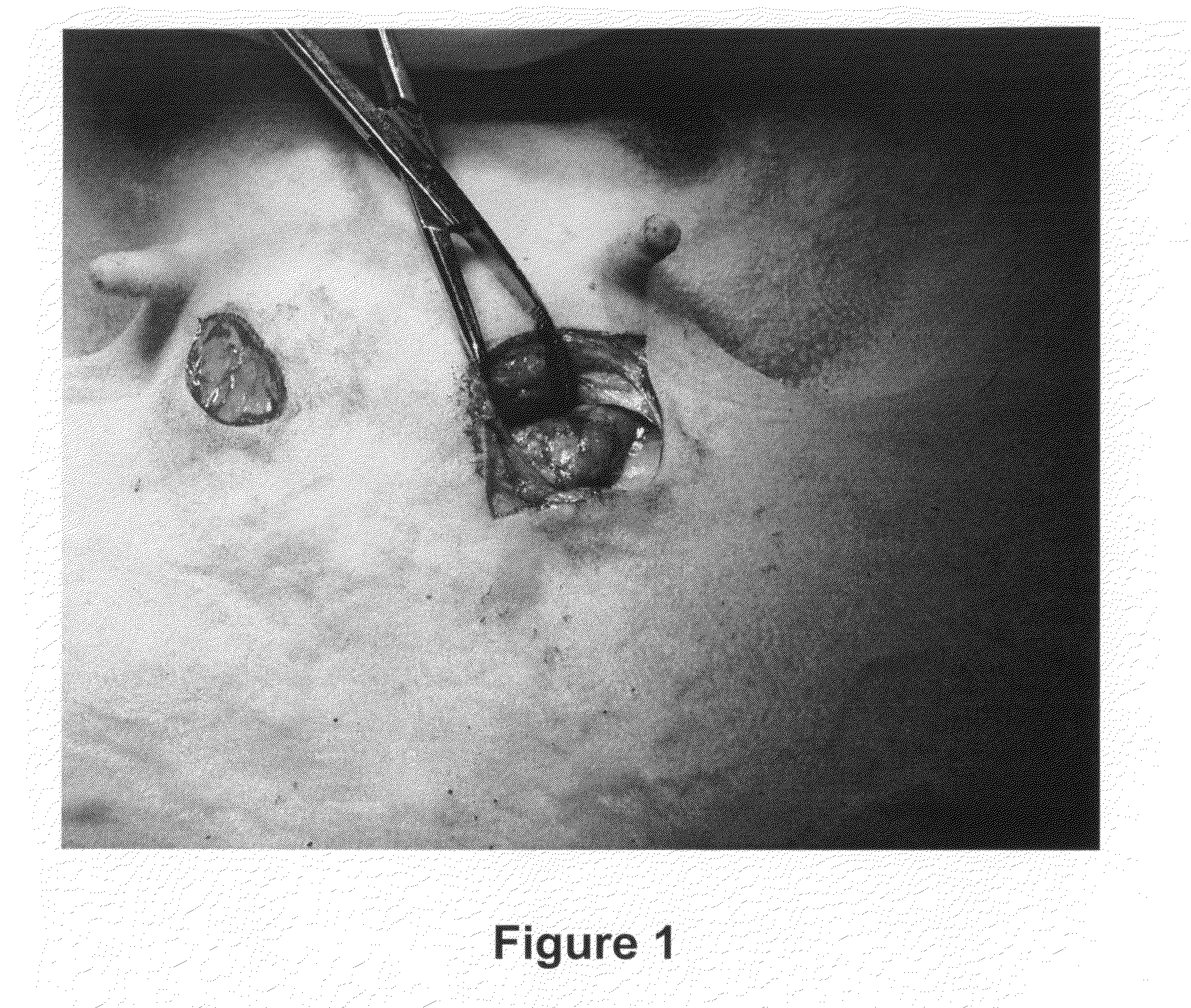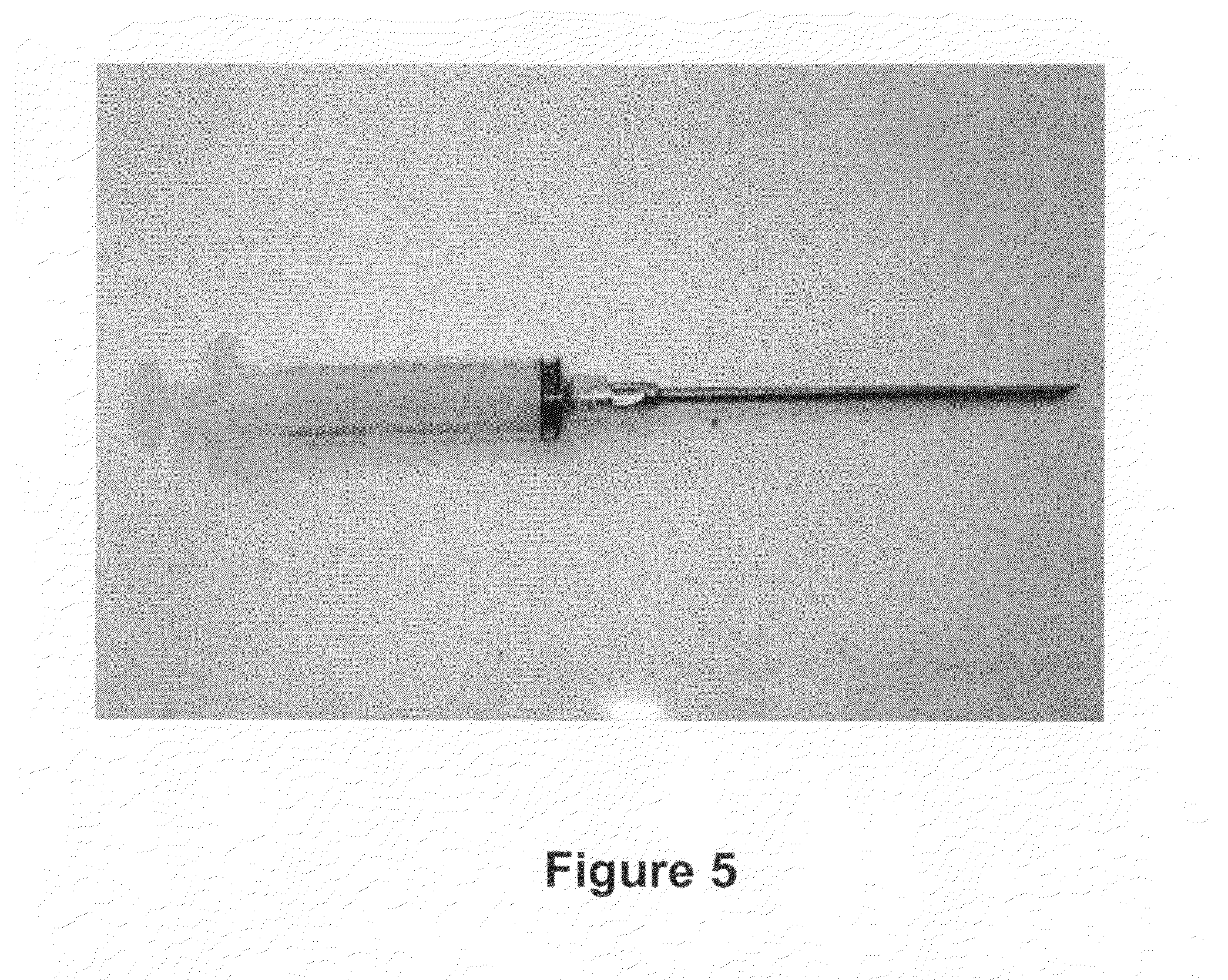Milk production method
a milk production method and milk technology, applied in the field of milk production methods, can solve the problems of increasing the time required for milk products to spoil, milk products may spoil, and milk products like other foodstuffs are naturally contaminated with microorganisms, so as to improve shelf life and improve shelf life. , the effect of improving shelf li
- Summary
- Abstract
- Description
- Claims
- Application Information
AI Technical Summary
Benefits of technology
Problems solved by technology
Method used
Image
Examples
example 1
Preparation of Antigen Releasing Device Minus Adjuvant
Materials
[0092](i) 0.15 g mannitol-D (Sigma-Aldrich)
(ii) 0.15 g sodium citrate (Proanalys)
(iii) 11.25 mg lipase from Pseudomonas fluorescens (Sigma-Aldrich)
(iv) 0.75 ml part A Silastic (Dow Corning Q7-4850)
(v) 0.75 ml part B Silastic (Dow Corning Q7-4850)
(vi) 2×2.5 ml disposable syringes (Terumo)
(vii) 2×1 ml syringe (Terumo)
(viii) 2×12 G×4 inch stainless steel hypodermic needles
(ix) 37° C. incubator
(x) sterile petri dish
(xi) sterile scalpel
(xii) sterile spachella
(xiii) 32 ml glass McCartney bottle
Methods
[0093](i) Remove pistons from all syringes
(ii) Part A—silastic placed into 1 ml syringe using spatula. Piston replaced into syringe and 0.75 ml quantity dispensed into one 2.5 ml syringe.
(iii) Procedure repeated for Part B.
(iv) Lipase, mannitol and sodium citrate are combined and mixed in a small glass McCartney then placed into the 2.5 ml syringe containing Part A of the silastic. Part B was then expelled from its syringe into th...
example 2
Preparation of Antigen Releasing Device Including Adjuvant
Materials
[0094](i) 0.3 g mannitol-D (Sigma-Aldrich)
(ii) 0.3 g sodium citrate (Proanalys)
(iii) 22.50 mg lipase from Pseudomonas fluorescens (Sigma-Aldrich)
(iv) 1.2 mg IL1-B Fragment 163-171 synthetic human (Sigma)
(v) 1.5 ml Part A Silastic (Dow Corning Q7-4850)
(vi) 1.5 ml Part B Silastic (Dow Corning Q7-4850)
[0095](vii) 2×2.5 ml disposable syringes (Terumo)
(viii) 2×1 ml syringe (Terumo)
(ix) 2×12 G×4 inch stainless steel hypodermic needles
(x) 37° C. incubator
(xi) sterile petri dish
(xii) sterile scalpel
(xiii) sterile spachella
(xiv) 32 ml glass McCartney bottle
Methods
[0096](i) Remove pistons from all syringes
(ii) Part A silastic placed into 1 ml syringe using spatula. Piston replaced into syringe and 0.75 ml quantity dispensed into one 2.5 ml syringe.
(iii) Procedure repeated for Part B.
(iv) Lipase, mannitol and sodium citrate mixed in a small glass McCartney then placed into the 2.5 ml syringe containing Part A of the silastic. P...
example 3
Delivery of ARD
[0097]A device was purpose designed and built comprising a 10 ml disposable luer lock syringe, a 10 G×4 inch stainless steel hypodermic needle and a 90 mm×10 G stainless steel welding rod (see FIG. 5). The device was assembled with the rod attached to the piston of the syringe and passing through the needle. The piston was withdrawn about 3 cm allowing for free space near the tip of the needle in which to insert the antigen releasing device. Thus, when the piston is depressed, the antigen releasing device is expelled from the needle by the rod (see FIG. 5).
[0098]The animal was placed on the floor on its back and restrained by animal handlers. An area approximately 3 cm×10 cm right lateral and adjacent to the udder was swabbed with iodine. 2 ml of 2% lignocaine infiltrated the cutaneous tissue through a 26 G hypodermic needle as a local anaesthetic. The 10 G needle housing the ARD was inserted in the posterior end of this area and pushed to the anterior end subcutaneou...
PUM
| Property | Measurement | Unit |
|---|---|---|
| distance | aaaaa | aaaaa |
| distance | aaaaa | aaaaa |
| distance | aaaaa | aaaaa |
Abstract
Description
Claims
Application Information
 Login to View More
Login to View More - R&D
- Intellectual Property
- Life Sciences
- Materials
- Tech Scout
- Unparalleled Data Quality
- Higher Quality Content
- 60% Fewer Hallucinations
Browse by: Latest US Patents, China's latest patents, Technical Efficacy Thesaurus, Application Domain, Technology Topic, Popular Technical Reports.
© 2025 PatSnap. All rights reserved.Legal|Privacy policy|Modern Slavery Act Transparency Statement|Sitemap|About US| Contact US: help@patsnap.com



